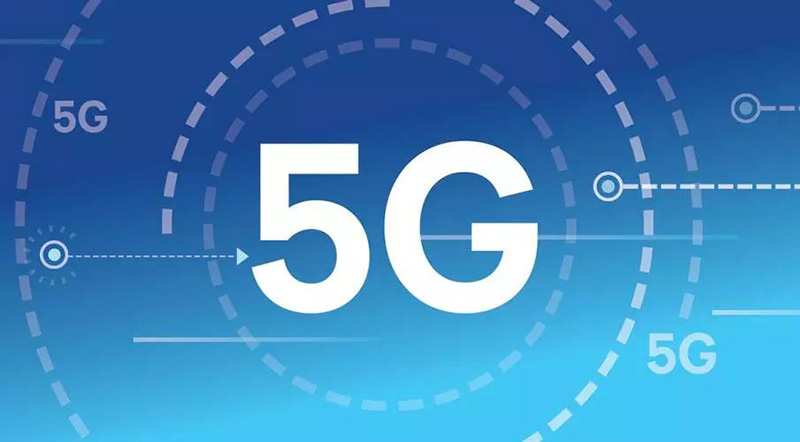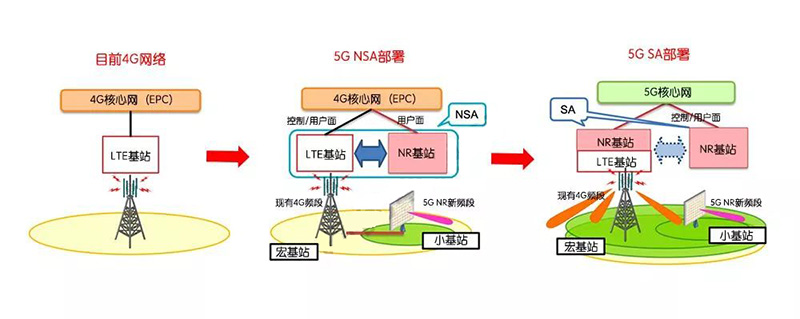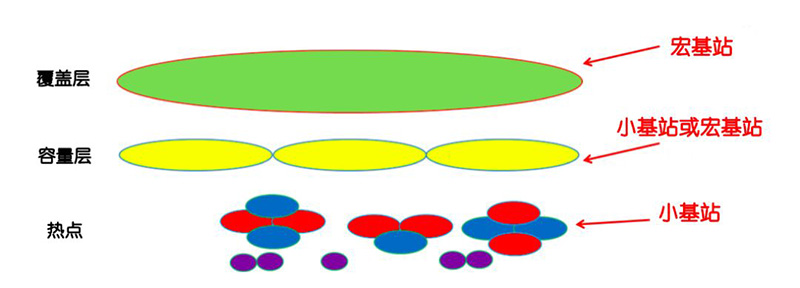Mobile communications have profoundly changed people’s lives. In order to cope with the explosive growth of mobile data traffic, massive device connections, and the emerging various new services and application scenarios in the future, the fifth-generation mobile communications (5G) system emerged as the times require. 5G will penetrate into all areas of future society and build a comprehensive information ecosystem centered on users.


Nowadays, the concept of 5G is in full swing, and the Internet is full of articles focusing on 5G. Have you misunderstood many exaggerated and alarmist rumors? Today, this article will clarify everything for you!
Misunderstanding 1: 5G is a revolution that will replace 4G
The initial 5G was deployed in NSA mode, which relied on existing 4G to expand network capacity and coverage. The initial 5G is very similar to 4G, and network deployment mainly uses existing 4G base station resources. This is a smooth evolution process from 4G to 5G.
In fact, regardless of the NSA or SA deployment model, 4G will continue to provide voice, data and IoT services for a long time, coexisting with 5G networks.
As for the “5G changes society” we usually talk about, it will take time for 5G to have a revolutionary and large-scale impact on society.


Myth 2: 5G will replace Wi-Fi
In the past 20 years, cellular networks and Wi-Fi have moved from outdoors to indoors, and from indoors to outdoors. The two complement each other and share wireless traffic. As cellular networks evolve from 4G to 5G, Wi-Fi technology is also evolving at the same time.
It is more difficult for 5G high-band signals to penetrate indoors, and there are shortcomings in indoor coverage. Facing the growing video and Internet of Things services, the world will still need Wi-Fi to supplement coverage and capacity. 5G does not replace Wi-Fi, but the two work together to expand the scale of the wireless ecosystem.
Misunderstanding 3: 5G requires large investments and expensive tariffs
From the perspective of single site scale, early use of 4G base stations and supporting resources for co-site deployment of 5G can greatly save investment costs.
People usually think that “5G investment is large” because 5G requires new use of higher frequency bands and the construction of more small base stations, which leads to an increase in overall investment. But this cannot be generalized. It depends on the operator’s specific deployment plan for detailed analysis, which we will mention in the following chapters.
As for the tariff issue of 5G, it will definitely be cheaper than 4G, because the spectrum efficiency of 5G has doubled and the cost per BIT has dropped exponentially. Under the trend of fierce price war, tariffs will inevitably become cheaper and cheaper.
At the same time, because 5G network slicing enables diversified application scenarios of mobile broadband and the Internet of Things, future 5G tariffs will never rely on a single traffic charge, but on diversified tariff standards based on “experience first”. At the beginning of 4G, there was a concern about “one suite per night” for traffic.
Myth 4: 5G requires new frequency bands
You can use new frequency bands to build 5G, but no one stops you from refarming 2/3/4G frequency bands or using existing frequency bands to build 5G.
In the R15 version, 5G NR defines multiple frequency bands from sub 6GHz to millimeter waves, as shown below:


Among them, some are new frequency bands introduced by 5G, and some are old LTE frequency bands, so that 5G is not limited by spectrum resources and can be deployed in low, medium and high frequency bands.
For example, China Mobile and Sprint of the United States are deploying 5G on 2.6GHz, using the original LTE frequency band n41; while T-mobile of the United States plans to deploy 5G on 600MHz, using the original LTE frequency band n71.
Misunderstanding 5: 5G requires large channel bandwidth
When it comes to 5G, people think of “large bandwidth and high speed.” However, 5G has a flexible physical layer design that supports channel bandwidths from 5MHz to 100MHz (millimeter wave band 400MHz).
In other words, operators only have 5MHz frequency bandwidth and can theoretically build 5G networks. For example, Dish in the United States plans to use narrow bandwidth to build an NB-IoT network and then evolve to 5G IoT to focus on IoT business.
Let’s do some theoretical calculations. The minimum channel bandwidth of 4G LTE is 1.4MHz, and the minimum channel bandwidth supported by 5G is 5MHz. If an operator only has 6.4MHz bandwidth, it can theoretically build a 4G and 4G network through non-standalone networking (NSA). 5G dual connection network.
Misunderstanding 6: 5G requires Massive MIMO
Massive MIMO can significantly improve spectral efficiency, capacity and coverage, but Massive MIMO also has its own challenges, mainly: the antenna will be larger and heavier, the tower may not be able to bear the load, and power upgrades and backhaul upgrades are required. It is applicable For some sites, it is not economical to deploy Massive MIMO at all sites.


Usually, the low-band coverage layer uses 4T4R, the mid-band capacity layer uses 8T8R or 64T64R, and the millimeter-wave high-band uses 128*128 or higher-order Massive MIMO.
Misunderstanding 7: 5G is just a small base station
Why does 5G need small base stations? Because higher frequency bands mean smaller wireless signal coverage, more base stations need to be built.
However, since 5G is not limited to spectrum resources and can be deployed in low, medium and high frequency bands, it means that 5G has macro base stations and small base stations, but 5G cannot be equated with small base stations.
Usually, when operators consider full 5G coverage, they use low-frequency bands as the coverage layer, mid-frequency bands as the capacity layer, and millimeter-wave high-frequency bands as the high-capacity layer (hot spots).


As can be seen from the figure above, the coverage layer is still macro stations, and small/micro base stations are not deployed across the entire network. Of course, operators are not that stupid. It costs a lot to deploy so many small/micro base stations.
Myth 8: 5G network latency is less than 1 millisecond
Sometimes, delay refers to the time it takes for a data packet to be received from the sending end. Simply put, it is half of the Ping delay, also called one-way delay.
Sometimes, latency refers to the round-trip time of packet transmission, which is the same as ping latency.
In 3GPP and ITU, control plane delay and user plane delay are also defined. Control plane delay refers to the transition time from idle state to connected state; user plane delay refers to the one-way delay of IP layer packet transmission.
In different application scenarios, the latency requirements of 5G are also different. In the eMBB scenario, the 5G NR user plane delay (one-way) is 4ms; in the URLLC scenario, the 5G NR user plane delay (one-way) is 0.5 ms; the control plane delay is 10ms.
Low-latency 5G is just for a wide range of 5G applications in the future. For example, VR/AR latency requirements are 7-12ms, and industrial robot arm latency requirements are 1-10ms.
Misunderstanding 9: Autonomous driving requires 5G
Whether autonomous driving requires 5G depends on which level it is.
Autonomous driving is divided into 5 levels (L1-L5) from “freeing hands” to “freeing eyes” to driverless driving.
If L1 to L4 autonomous driving can collect data through local sensors such as cameras, radars, and lidars to achieve local decision-making and control, but at the L5 autonomous driving stage, network communication needs to be used to expand the sensing range and make up for the lack of perception from local sensors. Ability to achieve 100% safe decision-making.
To put it simply, the local sensing system allows the car to “see six directions”, but autonomous driving also requires network communication to “hear all directions”.
Misunderstanding 10: 5G players are just operators and equipment manufacturers
In the 4G mobile Internet era, the players in the industry chain are mainly operators, equipment vendors, mobile phone vendors and Internet companies. However, 5G defines three major application scenarios: eMBB (enhanced mobile broadband), URLLC (ultra-high reliability and ultra-low latency), and mMTC (large-scale machine connection), targeting all industries including automobiles, agriculture, manufacturing, health, and medical care. Therefore, we say that “4G changes life, and 5G changes society.” The entire industry needs to jointly promote the new 5G future.